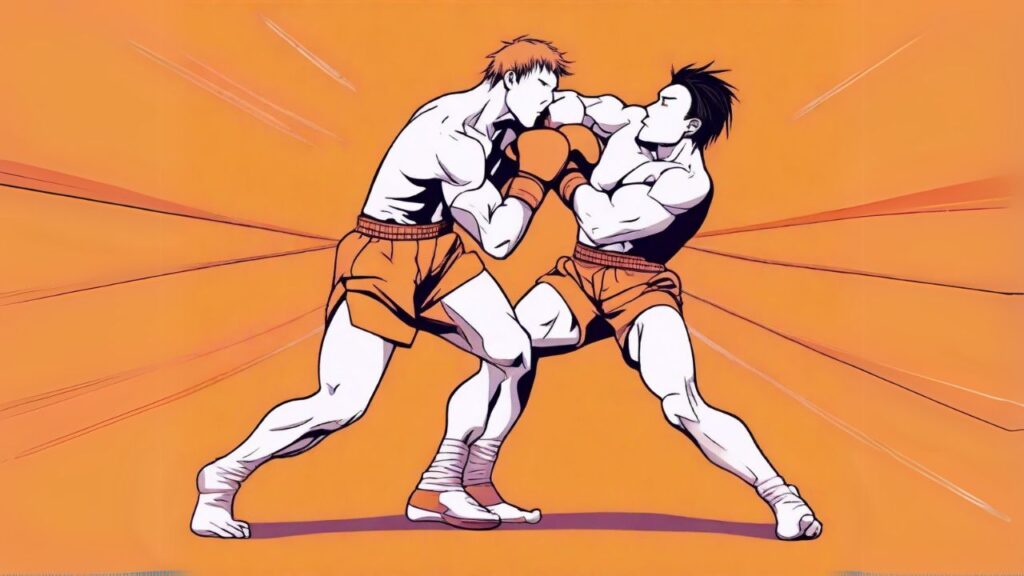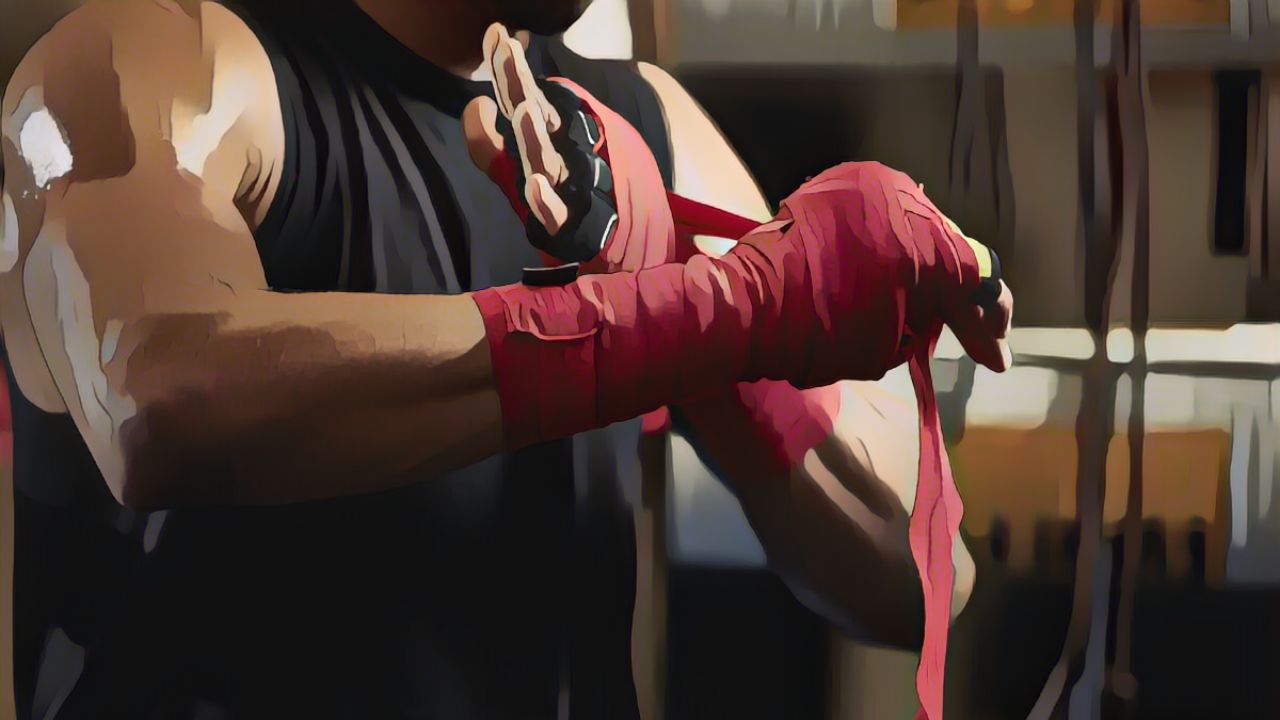From ancient arenas to modern octagons, the evolution of combat sports is a fascinating story woven into the fabric of human civilization, revealing our primal fascination with skill and determination in physical trials
Archaeological records indicate that combat sports have captivated audiences since ancient times, starting from the ruthless pankration of the ancient Greeks to the throne of the Roman Empire dimana men would be slain in gladiatorial competitions.
As civilizations grew more complex, so too did these physical contests, with disciplines of Asian martial arts—Karate, Judo, and Muay Thai—wherein practitioners were not only judged on their physical strength but also their spirit and philosophy, and identity among different cultural backgrounds. From boxing to self-defence, and more Mixed Martial Arts (MMA) has become a global phenomenon that knows no cultural barriers and combines a number of fighting styles for its athletes.
The Age of Information Super-Driven: This evolution has further been turbo-charged by the digital age, where the art of combat has been thrust from regional felds into a global battlefront, as sports chased by millions of eyes on pixelated screens ignite debates over safety and ethics.
The allure of combat sports transcends sport; it is a testament to the human condition itself, of conflict and mastery, a tapestry of culture that weaves together people’s, traditions, philosophies and the very essence of our existence.
Here’s a quick overview of the history of combat sports:

Ancient Civilizations: Combat sports can be traced back to ancient civilizations such as Ancient Egypt, Mesopotamia, Greece, and Rome. These cultures practiced various forms of combat as both a means of entertainment and training for warfare. The Olympic Games in Ancient Greece featured events like boxing, wrestling, and pankration (a mixed martial art combining elements of boxing and wrestling).
Asian Martial Arts: Asia has a rich history of combat sports, with disciplines like Chinese Kung Fu (also known as Wushu), Japanese Judo, Karate, Sumo, and various forms of traditional martial arts from different regions. These martial arts often blend combat techniques with philosophy and spiritual elements.
Medieval Europe: In medieval Europe, combat sports evolved alongside the knightly culture. Jousting, a form of mounted combat, gained popularity as a spectator sport during tournaments. Other forms of combat, like swordfighting and grappling, were also practiced for self-defense and entertainment.
Rise of Boxing and Modern Combat Sports: In the 18th and 19th centuries, modern boxing started to take shape. The Marquess of Queensberry rules, introduced in the mid-19th century, helped establish the modern rules for boxing, including the use of gloves and standardized rounds. Boxing quickly gained popularity as a competitive and regulated sport.
Mixed Martial Arts (MMA): MMA is a relatively modern combat sport that gained prominence in the late 20th century. It involves fighters with different martial arts backgrounds competing against each other. The Ultimate Fighting Championship (UFC), founded in 1993, played a significant role in popularizing MMA and bringing it into the mainstream.
Kickboxing: Kickboxing combines elements of traditional boxing with various kicking techniques from martial arts such as Karate and Muay Thai. Different styles of kickboxing emerged, including American Kickboxing, Muay Thai, and K-1, each with its own rules and techniques.
Brazilian Jiu-Jitsu (BJJ): BJJ is a martial art and combat sport that focuses on ground fighting and submission techniques. It evolved from Japanese Judo and Jujutsu and gained worldwide recognition through its effectiveness in mixed martial arts competitions.
Wrestling: Wrestling has been a staple of combat sports in various cultures. Greco-Roman wrestling and freestyle wrestling are two major styles practiced internationally, with both being featured in the Olympic Games.
Boxing’s Continued Evolution: Boxing has remained one of the most popular combat sports throughout history. It has produced legendary figures like Muhammad Ali, Mike Tyson, and more recently, fighters like Floyd Mayweather Jr.
Regulation and Safety: Over time, combat sports have become more regulated to ensure the safety of participants. Rules have been established to prevent excessive violence and protect fighters from unnecessary harm.
Globalization and Popularity: Combat sports have gained immense popularity globally, with events like the UFC attracting large audiences and establishing fighters as celebrities. Promotions like Bellator MMA and ONE Championship have also contributed to the expansion of combat sports’ reach. Combat sports continue to evolve with new styles, disciplines, and regulations, reflecting the dynamic nature of athletic competition and cultural exchange.
Challenges in Combat Sports: Impact on Athletes and the Discipline Landscape
🌍🥋 Warriors Through Time: The #GlobalEvolution of Combat #sports 🥊🏆Join us on a thrilling journey exploring the rich #History of combat sports! From ancient #Gladiators to #modern #MMA champions, discover👉 Dive in: https://t.co/xLV403BKE8 pic.twitter.com/wR1lFMouVw
— Action Games Now (AGN) (@ActionGameNow) January 18, 2025
Combat sports face a range of challenges that impact both athletes and the overall landscape of these disciplines. These challenges can vary depending on the specific sport, region, and level of competition.
Some of the main challenges include:
Health and Safety: Ensuring the safety of athletes is paramount in combat sports due to the physical nature of the activities. Injuries, especially head trauma, pose significant risks. Balancing the competitive nature of these sports with athlete well-being and minimizing the potential for long-term health issues remains a critical challenge.
Regulation and Rules: Different combat sports have varying rules and regulations, leading to potential inconsistencies in judging, officiating, and fairness. Maintaining standardized rules that ensure both safety and fair competition across different organizations and regions can be challenging.
Gender Equality: Achieving gender equality in combat sports has been an ongoing struggle. Historically, female participation has been limited, and women have faced unequal opportunities, pay, and media coverage. Efforts to address these disparities are still underway.
Youth Development: Properly nurturing young talent and providing safe, structured environments for their development is essential. Striking a balance between rigorous training and age-appropriate coaching can be challenging, as pushing young athletes too hard can lead to burnout and injury.
Athlete Pay and Welfare: Compensation for combat sports athletes, especially those outside the elite few, can be inadequate. Many athletes struggle to make a living from their sport and may lack proper healthcare, retirement plans, or support systems.
Doping and Performance Enhancement: Combat sports, like all sports, face the challenge of preventing doping and performance-enhancing substance use. Maintaining a level playing field and ensuring the integrity of the competitions is an ongoing endeavor.
Image and Perception: Combat sports sometimes grapple with public perceptions related to violence and brutality. Promoting the positive aspects of these sports, such as discipline, respect, and skill development, is crucial to counteract negative stereotypes.
Inclusivity and Diversity: Combat sports have historically been associated with specific cultures and demographics. Expanding participation to include a broader range of ethnicities, backgrounds, and socio-economic groups remains a challenge.
Organizational Unity: Many combat sports have multiple governing bodies and organizations, leading to fragmented landscapes. Achieving unity and cooperation among these organizations can streamline rules, enhance athlete safety, and create a more cohesive international structure.
Media Coverage: Combat sports often receive less media attention compared to other sports, limiting exposure and opportunities for athletes. Securing better media coverage and broadcasting deals can help combat sports gain wider recognition.
Education and Public Awareness: Proper education for athletes, coaches, officials, and spectators about the rules, techniques, and risks involved is crucial. Increasing public awareness about the nuances and values of combat sports can foster a better understanding and appreciation.
Addressing these challenges requires collaboration among athletes, coaches, governing bodies, promoters, fans, and other stakeholders. Striving for innovation, inclusivity, safety, and fair competition will be key to overcoming these obstacles and ensuring the long-term success of combat sports.
Definition and Context: Combat sports max strike
In the context of combat sports, “Max Strike” is more commonly associated with a certain type of training equipment, particularly gloves, and not a widely accepted technique or concept.
This term is exemplified in the Combat Sports Max Strike MMA Training Gloves. If you are a passionate practitioner of Mixed Martial Arts (MMA), these gloves are engineered with optimal safety standards and performance during training.
Though not a uniform term used throughout all combat sports, the idea of the max strike can simply be understood as the maximum force a strike can hit someone with; This makes sense based on the general aim of combat sports is to hit hard, clean, and to not put yourself in much danger.
Equipment and Measurement
- Max Strike Gloves: The Combat Sports Max Strike MMA Training Gloves are one of the most safest training gloves for MMA because they feature 2 inches of molded foam padding. With the brand name comes a product geared around open palm, hinged knuckle techniques that can split between striking and grappling technique.
- Measurement Tools: Devices such as the Max Strike Punch Tracker are capable of measuring the force and speed of individual punches, delivering performance data on striking. These tools are used to analyze and improve the striking capabilities of athletes and their trainers.
Application in Different Combat Sports
- Mixed Martial Arts (MMA): Max Strike gloves are popular for MMA due to their safety features, allowing for striking and grappling.
- Muay Thai: The design of the gloves also enables the performance of various types of strikes including punches, kicks, elbows and knees, which is unique to Muay Thai.
- Boxing: While boxing employs more specialized gloves, max strike principles can also apply due to the must-have for strong punches, that still needs to be delivered while upholding the pillars of safety.
Techniques and Training Methods for Powerful Strikes
There is a few things to consider when throwing powerful strikes:
- Biomechanics:
- Impulse-Momentum Relationship: The more massive (i.e., the larger) the part of the body that is striking and the faster it is moving, the greater the force of the strike.
- Effective Mass and “Snap”: A momentarily rigid body improves transfer of power on impact
- Kinetic Chain: Good transfer of force through the body from the floor through the body to the striking limb
- Physical Conditioning:
- Strength and Conditioning: Training both your upper and lower body strength
- Speed and explosiveness: Enhanced rate of force development through plyometric training and sprint training.
- Core Strength: Important for the transfer of force and balance
- Training Methods:
- Technique Drills: Shadow boxing, pad work and sparring to hone mechanics.
- Resistance training: Compound lifts for the required strength building.
- Plyometric and Speed Drills: For explosiveness
- Flexibility and Mobility Work: To improve range of motion and avoid injuries.
Safety Concerns and Regulations
- Injury Risks: Blows can produce acute injuries like concussions and fractures, as well as chronic injuries like traumatic brain injuries (TBI) and long-term cognitive impairments
- Protective Equipment: Trainers are required by law to wear things such as gloves, mouth guards, and headgear to protect against injuries.;
- Medical Oversight: Most combat sports laws require on-site medical personnel and pre-fight physical examinations.
- New justifications or rules for use of force: Limits on the kinds of strikes that would be allowed, internationally and domestically, to reduce exposure to certain types of serious injury.
- Training: Regulations on the intensity and frequency of sparring and protection equipment.
- In addition: Regulatory enforcement (along with education about injury risks and prevention) ensures that safety measures are implemented.
Read More:
Which Combat Sport are included in Olympics?
Unlocking the World of Combat Sports: Exploring the A to Z list









Comments are closed.